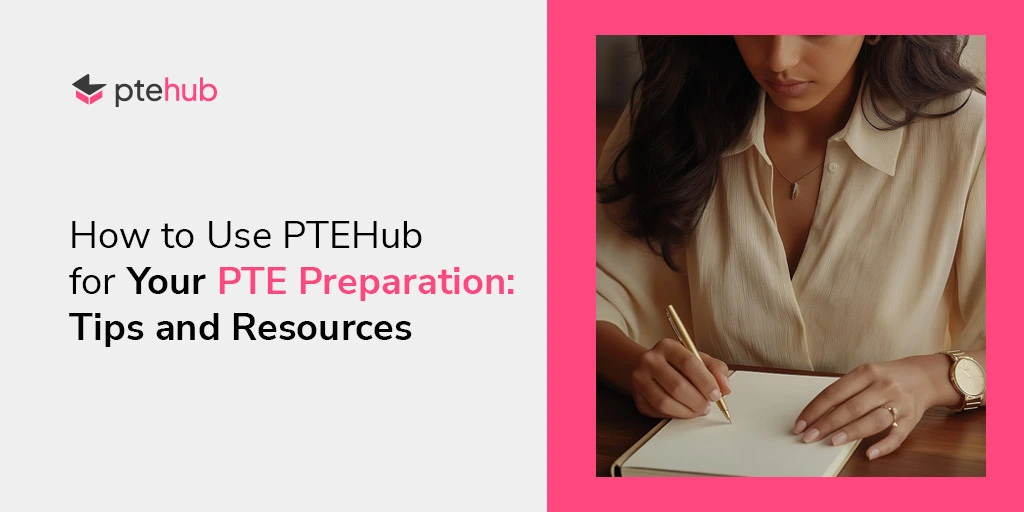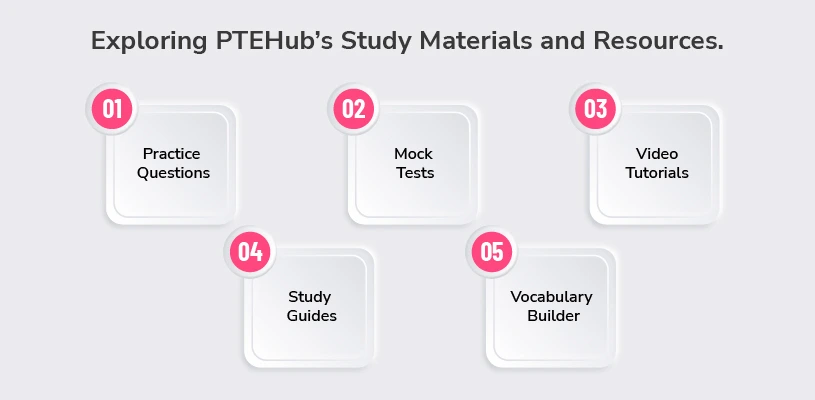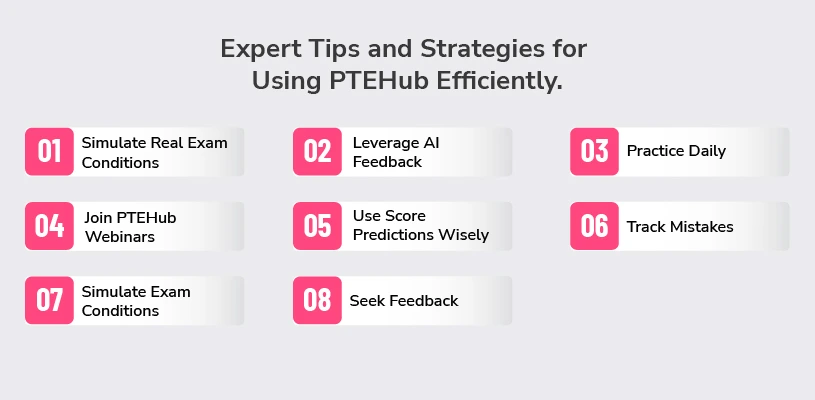
The Pearson Test of English (PTE) is a critical exam for non-native English speakers looking to study, work, or migrate to English-speaking countries. Achieving a high score requires strategic preparation, and that’s where PTEHub comes in.
PTEHub offers a structured and resource-rich platform designed to help test-takers enhance their English skills and improve their PTE performance.
This guide will help you walk through the process of using PTEHub effectively, from setting up your account to leveraging its study plans, strategies, and real success stories from candidates who achieved their target scores.
Introduction to PTEHub
PTEHub is a one-stop solution for PTE aspirants, offering a wide range of study materials, practice tests, and personalised study plans. It’s designed to cater to the unique needs of every test-taker, whether you’re a beginner or an advanced learner.
With its user-friendly interface and expertly curated resources, PTEHub has become a go-to platform for thousands of successful candidates. But how can you make the most of PTEHub?
In this guide, we’ll walk you through the steps to set up your account, explore its resources, and use its features strategically to boost your PTE score.
Setting Up Your PTEHub Account: A Step-by-Step Guide.

Before diving into your preparation, setting up your PTEHub account is the first essential step. Here’s how you can do it:
Step 1: Visit the PTEHub Website
Go to the official PTEHub website and click on the Sign-Up button.
Step 2: Choose Your Plan
PTEHub offers both free and premium plans. While the free plan provides access to basic resources, the premium plan unlocks advanced features like personalised study plans, full-length mock tests, and expert feedback. Choose the plan that suits your needs and budget.
Step 3: Create an Account
Provide necessary details such as your name, email, and password. Some platforms require phone number verification.
Step 4: Select Your Study Plan
Depending on your needs, you can choose from free or premium study plans.
Step 5: Complete Your Profile
Fill in details about your PTE target score, areas of improvement, and preferred study schedule.
Step 6: Explore the Dashboard
Once logged in, you will have access to PTEHub’s various features, including practice tests, video tutorials, and study materials.
Step 7: Set Your Goals
PTEHub allows you to set your target score and exam date. This information helps the platform create a customised study plan tailored to your needs.
Exploring PTEHub’s Study Materials and Resources.

One of the standout features of PTEHub is its extensive library of study materials. Here’s a breakdown of what you’ll find:
1. Practice Questions
PTEHub offers thousands of practice questions for all sections of the PTE exam—reading, writing, listening, and speaking. These questions are designed to mimic the actual exam, helping you get accustomed to the format and difficulty level.
2. Mock Tests
Full-length mock tests are essential for gauging your readiness. PTEHub’s mock tests simulate the real exam environment, complete with timers and score reports. This feature is particularly useful for identifying your strengths and weaknesses.
3. Video Tutorials
For visual learners, PTEHub provides video tutorials that cover key concepts, strategies, and tips for each section of the exam. These tutorials are created by PTE experts and are incredibly helpful for understanding complex topics.
4. Study Guides
PTEHub’s study guides are comprehensive resources that cover everything from grammar rules to essay-writing techniques. They’re perfect for brushing up on your fundamentals.
5. Vocabulary Builder
A strong vocabulary is crucial for the PTE exam. PTEHub’s vocabulary builder helps you learn new words and phrases, complete with definitions, examples, and pronunciation guides.
Maximising the Benefits of PTEHub’s Personalised Study Plans.

One of the standout features of PTEHub is its personalised study plans tailored to each user’s strengths and weaknesses. Here’s how to make the most of them:
1. Take an Initial Diagnostic Test
This helps PTEHub assess your current skill level and identify areas for improvement.
2. Follow the Recommended Study Plan
PTEHub generates a customised study plan based on your performance with daily tasks.
3. Schedule Study Sessions
Stick to a routine by setting aside dedicated time each day for practice.
4. Review Progress Reports
Regularly check your performance analytics to understand which areas need more focus.
5. Adjust the plan as needed
If you feel stronger in one section but weaker in another, tweak your study schedule accordingly.
Expert Tips and Strategies for Using PTEHub Efficiently.

To maximise your PTEHub experience, here are some expert-backed strategies:
1. Simulate Real Exam Conditions
Practice mock tests under timed conditions to get used to the exam format.
2. Leverage AI Feedback
Use AI-powered feedback to fine-tune pronunciation, fluency, and grammar.
3. Practice Daily
Consistency is key. Even 30–60 minutes of focused practice daily can make a difference.
4. Join PTEHub Webinars
These provide direct insights from PTE experts and live Q&A sessions.
5. Use Score Predictions Wisely
PTEHub’s estimated scores give you an idea of where you stand, but always aim to improve beyond them.
6. Track Mistakes
Keep a journal of common mistakes and review them regularly to avoid repeating errors.
7. Simulate Exam Conditions
When taking mock tests, try to replicate the actual exam environment. Sit in a quiet room, time yourself, and avoid distractions.
8. Seek Feedback
If you’re on the premium plan, take advantage of the expert feedback feature. This will help you understand your mistakes and learn how to avoid them in the future.
How Does PTEHub Help Candidates Achieve Their Desired Scores?
Many candidates have successfully used PTEHub to reach their dream scores. Here are some real success stories:
Emily from India
“I struggled with the speaking section, but PTEHub’s AI scoring helped me identify my pronunciation issues. After a month of practice, I scored 79+!”
James from Vietnam
“The personalised study plan was a game changer. It kept me on track and helped me improve my writing skills significantly.”
Sophia from Brazil
“I loved the mock tests. They gave me real exam experience, and I was able to boost my confidence before my actual PTE test.”
These testimonials highlight how PTEHub has been instrumental in helping candidates overcome challenges and succeed.
Conclusion
PTEHub is a comprehensive and user-friendly platform designed to help test-takers prepare efficiently for the PTE exam. By setting up your account, exploring its study materials, following personalised study plans, and implementing expert tips, you can maximise your chances of achieving a high score.
Many candidates have already benefited from PTEHub—now it’s your turn to make the most of this incredible resource. Start your PTE preparation today and take a step closer to your academic or migration goals!
FAQs
1. How can I prepare myself for the PTE exam?
To prepare for the PTE exam, follow these steps:
- Understand the Exam Format: Learn about the four sections—speaking, writing, reading, and listening.
- Take a Diagnostic Test: Identify your strengths and weaknesses.
- Use Official PTE Materials: Practice with Pearson’s official mock tests and study guides.
- Develop Time Management Skills: Each section has a strict time limit, so practice answering within the allocated time.
- Improve English Proficiency: Work on vocabulary, pronunciation, and grammar through daily reading, listening, and speaking exercises.
- Join a Coaching Programme: Enrol in a PTE preparation course for expert guidance.
2. How can I be confident in the PTE exam?
- Practice Regularly: Consistency is key—take mock tests and improve on weak areas.
- Familiarize Yourself with the Test Interface: Use the PTE online practice platform to get used to the exam environment.
- Work on Pronunciation and Fluency: Speak clearly and confidently during the speaking section.
- Manage exam anxiety: Practice deep breathing and relaxation techniques before the test.
- Simulate Exam Conditions: Take practice tests in a quiet space with time constraints to build confidence.
3. How can I practice PTE at home?
- Use Online Practice Tests: Pearson’s official website and other online platforms offer mock tests.
- Download PTE Apps: Use apps like PTE Tutorials and E2Language for daily practice.
- Improve Listening Skills: Watch English news, podcasts, and TED Talks to enhance comprehension.
- Practice Speaking Aloud: Record yourself and compare your pronunciation with native speakers.
- Write Essays and Summaries: Develop your writing skills by summarizing articles and practicing essay writing.
4. What is the minimum PTE score for Australia in 2025?
The minimum PTE score for Australia in 2025 depends on the visa type:
- Student Visa (Subclass 500): Typically requires a PTE Academic score of 42 or above.
- Skilled Migration Visa (189, 190, 491): Requires at least 50 in each section for competent English, 65 for proficient English, and 79 for superior English to gain more PR points.
- Partner Visa (Subclass 820/801, 309/100): Usually requires a PTE score of 30 or above. It is best to check the latest requirements on the Department of Home Affairs website.
5. Is PTE harder than IELTS?
- Test Format: PTE is computer-based, while IELTS has both computer-based and paper-based options.
- Speaking Section: PTE requires speaking into a microphone, whereas IELTS involves a face-to-face interview.
- Scoring System: PTE is AI-scored, ensuring consistency, while IELTS is scored by human examiners, which may introduce slight variations.
- Difficulty Level: Some find PTE easier due to its automated scoring, while others prefer IELTS for its traditional approach.
- Test Duration: PTE takes about 2 hours, while IELTS can take over 2.5 hours (including the speaking test on a separate day in some cases).
The difficulty depends on personal preference—candidates comfortable with computers may find PTE easier, while those who prefer human interaction might opt for IELTS.